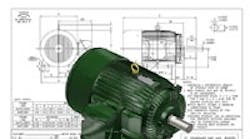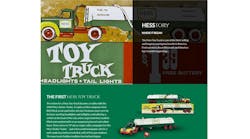3D Parts Catalog Technology -- A Critical Business Component for Manufacturers
We all have a jar of nuts and bolts in the garage, and most of us can recall an instance when we unsuccessfully sought out a specific nut, bolt or fastener. And while we have the luxury of throwing in the towel and simply purchasing a new part at the local hardware store, design engineers trying to locate parts clearly cannot afford to give up. Nor can they afford an inefficient, antiquated process. Fortunately, there is an emerging technology in the market that is solving this problem. Next generation solutions for managing and hosting 3D standard and commercial part catalogs are saving manufacturing companies both time and money.
By providing solutions which optimize how "standard parts" are managed and procured, manufacturers can reduce their direct material spend relative to standard parts by an average of 2% in the first year, while leveraging the on-going benefits of a leaner inventory and introduction of a formal parts standardization program.
3D part catalog management complements PDM by enhancing the management of 3D part catalogs with the aim of enabling parts or commodity reuse. By enabling configuration of 3D parts in native CAD formats within a larger PDM context, it also allows designers the confidence to find, reuse, and control standard parts more effectively. The reuse provided by CAD-native 3D part catalogs can be expected to reduce both IT management costs and overall product costs, including design, manufacturing and support costs.
Why Provide a 3D Parts Catalog?
Recently PARTsolutions conducted an industry survey that examined the importance of CAD-native 3D product catalogs to design engineers for product selection. Compiled by polling more than 500 companies -- including 3M, Lockheed Martin, Ford Motor Co., Goodrich, Cessna Aircraft Company and Bose Corporation -- the data reveals that supplying catalogs in paper, PDF or neutral file formats is no longer adequate, with 85percent percent of design engineers preferring part downloads in their CAD-native format.
| 85% of design engineers prefer part downloads in their native CAD format. |
But don't just take my word for it.
These findings are consistent with feedback gathered by automation components supplier, PHD Inc. over a period of more than ten years. As one of the first companies to web enable its product line -- including premium automation products including cylinders, clamps, escapements, grippers, slides, rotary actuators, proximity sensors and switches -- PHD eliminated the time-intensive process of creating, migrating and translating catalog content and saved enormous resources in the process. As a build-to-order business that offers more than 450 million product combinations, 3D product catalogs have been instrumental in establishing quick delivery as PHD's primary competitive advantage. What's more, the technology has resulted in 35 times more sales leads by allowing PHD to track who is accessing designs and proactively deliver sales and support information to its customers.
Reid Supply Co. has had a similar response from its customers. Earlier this year, the global industrial distribution company launched ReidSupply.com, an updated e-commerce website designed as a result of direct response to feedback from its customers. The feedback indicated a need for more web images and an improved data search experience. As a result, the Reid web services team utilized all of their print catalog's images, as well as their CAD drawings, which includes over 90% of every part in their catalog. They also employed a new search engine that shows customers their products faster and much more accurately. Reid has one of the largest CAD databases in the industrial supply industry, and the Reid digital library is already delivering more than 22,000 CAD downloads (qualified sales leads) per month and is helping Reid Supply to further customer service and satisfaction.
Why use 3D Parts catalogs? "Just in Time" vs. "Just in Case"
For large OEMs in today's competitive marketplace, it is more important than ever to utilize a single source of part data for standard part geometry, and allow automatic standard parts model creation "just in time" instead of "just in case." CAD-native 3D parts catalog management technology preserves 3D standard part catalog content independent of any CAD system or version. This allows for stability in the ongoing cataloging of parts, and gives designers the ability to find approved standard parts fast and with confidence, thereby reducing product development, catalog management and inventory costs.
Take The Boeing Co., an enterprise PARTsolutions customer and major Aerospace & Defense manufacturer for example. Product standards define an estimated 40% of the aerospace giant's product definition. Part standards are one classification of product standards and provide the specifications for nearly 4.5 billion standard parts. But the design environment has become increasingly more complex and dynamic with multiple CAD and PDM systems. As a result, designers are challenged with evolving designs, reducing cost, reducing part proliferation, working multiple programs and managing major CAD system upgrades.
The 'How-To'
If you decide to explore and implement a CAD-native 3D part catalog solution, there are a few elements you need to consider. A good solution is designed to complement open PDM, ERP and CAD systems, which will simplify getting started. Integration costs and timeframes are small when comparing to PLM and ERP implementations, and will typically enable a rapid time to value.
The following features are also critical:
- Part Consolidation -- Use of geometric and textual attribute comparison to provide a complete part duplication analysis.
- Extended Search across Supply Chain -- Rapid search for parts by any attribute, shape or any known descriptive information from provided, centrally accessible parts repository consisting of potentially your inventory (custom) and various supplier, commercial and industry standards 3D parts catalogs. Parts are delivered in CAD native format, thus, forever eliminating any time or effort associated with the remodeling, translation or data migration of any standard part.
- Rules for Control (Standardization) -- The ability to flag approved or preferred parts to ensure maximum reuse and enforce compliance. As well as, to lock-down or retire parts to prohibit any further reintroduction of parts to your enterprise while maintaining the ability to reference information.
- Value-driven Purchasing -- Automated linkages to ERP/PDM to enable procurement to perform vendor/part replacement feasibility studies. Provides valuable, necessary information for procurement to negotiate better contracts and leverage volume-based purchasing opportunities associated with ordering more parts from fewer vendors, or adopting a "just in time" approach to ordering.
The Bottom Line
In today's competitive environment, operational efficiency is a strategic imperative for manufacturers. More and more companies are finding 3D part catalog management technology saves time, reduces costs, enhances customer service and increases lead generation. So, when planning your 2010 business goals and objectives, why not plan to leverage the technology in your organization?
Tim Thomas is the CEO of PARTsolutions LLC, a provider of PLM solutions for next generation 3D part catalog management and hosting, delivering solutions since 1992. http://www.partsolutions.com.
Interested in information related to this topic? Subscribe to our Information Technology eNewsletter.




